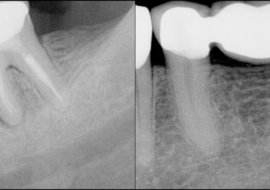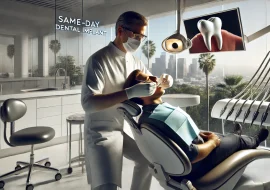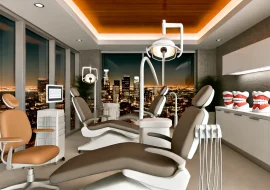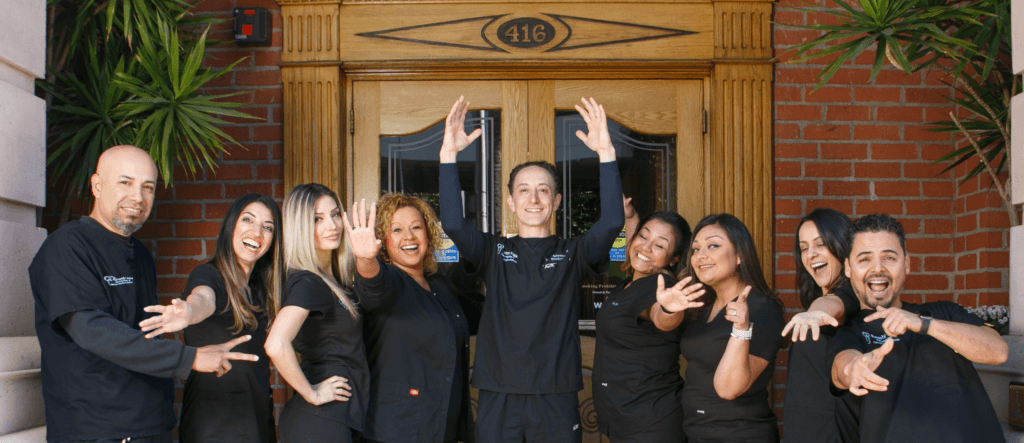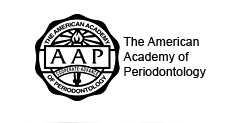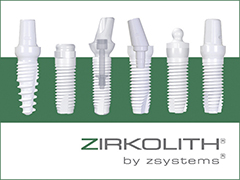Soft tissue grafting in Los Angeles – or anywhere else — is a procedure for people who have thin or recessed gum lines, which can make them more susceptible to gingivitis or more advanced problems impacting the gums and teeth. By restoring a healthy band of gum, soft tissue grafting is not only a powerful cosmetic solution but also an effective method of preserving one’s tooth foundation.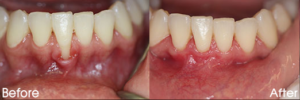
Board-certified periodontist Dr. Peiman Soleymani of Beverly Hills Periodontics & Dental Implant Center has performed this procedure countless times. With a sterling academic background, Dr. Soleymani has been a faculty member at several prestigious schools and a noted leader in the field for over two decades. If you are interested in learning more about soft tissue grafting, don’t hesitate to contact us directly with any questions or concerns that you might have.
What happens during Soft Tissue Grafting?
While there are several different types of soft tissue grafts—sometimes referred to as a gum tissue graft—these procedures generally involve removing tissue from one portion of the inside of the patient’s mouth and then transplanting it to cover the exposed areas of the patient’s teeth.
Why might it be necessary to get a soft tissue graft?
Gum recession is the most common reason patients receive a soft tissue graft, but it is more than just an aesthetic concern. Once the more resistant portion of the gum, the keratinized zone, has deteriorated, the remaining less resistant portion of the gum, the mucosa, will deteriorate at a faster rate risking the eventual loss of the tooth.
What causes recessed gums?
There are several potential causes for gum recession, the most common causes include:
- Poor dental care – Insufficient dental hygiene can lead to a buildup of bacteria and tartar, possibly leading to gum recession. Additionally, brushing too hard can also lead to gum recession due to weakened enamel.
- Genetics – Those who have a genetic predisposition for gum recession may experience the condition regardless of how well they take care of their dental hygiene.
- Periodontal diseases – Bacterial gum infections, whether or not they are related to insufficient dental hygiene, are the most prevalent cause for recessed gums in patients. These infections can weaken the soft tissue and bone surrounding the patient’s teeth, causing the gums to recede among other dangerous symptoms.
- History of trauma or orthodontic treatment.
- Occlusal Trauma or having a history of tooth grinding can also contribute to gum recession.
Is there any way to prevent gum recession?
Practicing proper dental hygiene habits is the best way to help prevent gum recession, as this can limit plaque buildup and keep gum and bone tissues healthy. Patients should also avoid brushing their teeth too aggressively and wait at least 15-30 minutes before or after eating or drinking to brush teeth so as to not weaken their teeth enamel.
On the other hand, genetic and other causes of gum recession are likely to be unavoidable. In these circumstances, a periodontal consultation followed by treatment may be the only way to avoid receding gums.
Your Gums Can’t Wait
For a healthy mouth and a happy, healthy life, it’s crucial to arrest periodontal problems quickly. Dr. Peiman Soleymani and the rest of our team here at Beverly Hills Periodontics & Dental Implant Center are here to provide the best care possible to both preserve and restore smiles. To get started, contact us at the phone numbers on this page or reach out online.

